How to choose a corner toilet?
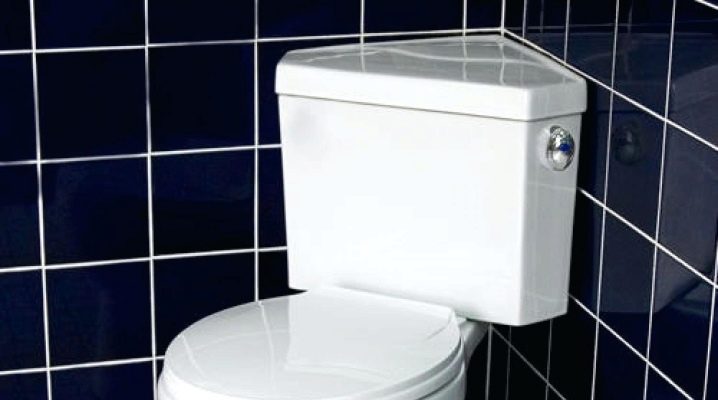
The area of both a combined and a separate bathroom in an average apartment is not always sufficient to accommodate all household items in it. You can remove the washing machine, laundry basket and even the sink from the room, but key items such as a bath or shower and toilet must be placed in it. Unfortunately, it is not always possible to place even a toilet and a bath in a standard way, then you have to look for such layout options so that objects do not interfere with each other and leave room for passage. One of these options is buying a corner toilet.
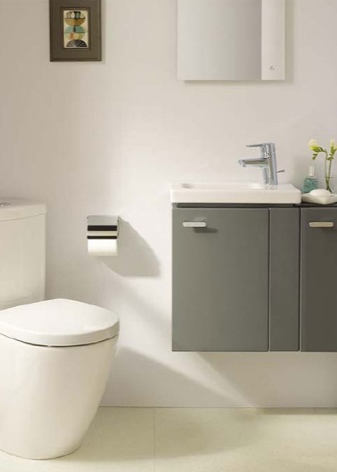
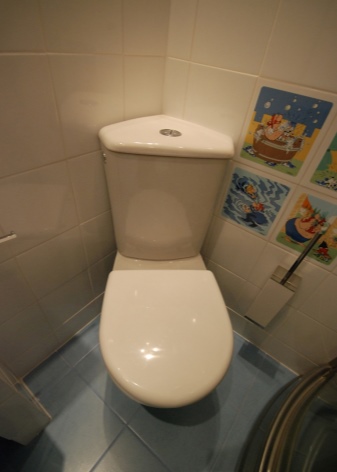
Peculiarities
Such a toilet is installed in the corner of the room, in this regard, it has some features.
- Its cistern is triangular to fit close enough to the junction of the walls. In this case, the bowl can be either a classic oval shape or an original, square or polygonal design. Also, the tank can be built into a wall niche or completely closed. Modern models not only fulfill sanitary and hygienic functions, but can also serve as a kind of design installation.
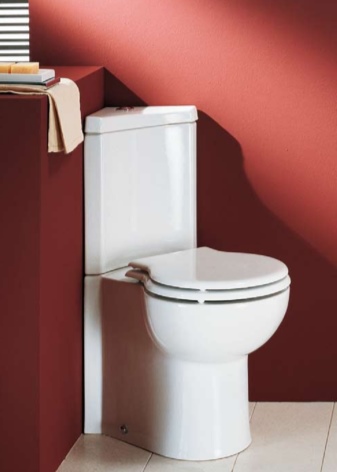

- The cistern of such a toilet does not have to be located directly behind the bowl. It can be raised to the ceiling and even hung in a more convenient place: closer or further on the wall.
- The bowl of such a toilet bowl can be installed not only on the floor, but also hung on the wall. The pendant models can carry up to 500 kg and are as robust as the floor-standing models.
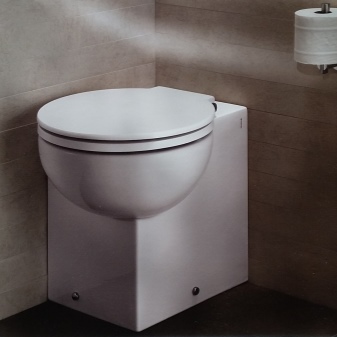

All these features make a visit to the bathroom more comfortable, but cause additional costs and difficulties in buying and installing a corner toilet.
Views
Corner toilets, like standard positioned toilets, can be of two types:
- floor-standing;
- suspended.
A floor-standing arrangement is considered standard, which is stable and easy to install. The suspended version is more difficult to install, but it is more convenient for cleaning. In both the first and second versions, the cistern can be located both above the bowl and be hung on the wall.
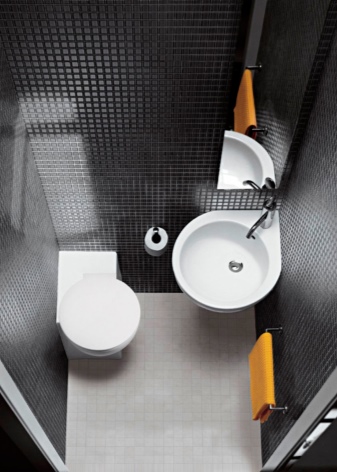

Separately, it is worth noting the option of a built-in tank, which is located in the wall structure. For its installation, an installation is used, which is a metal frame or a monoblock. It is mounted vertically and holds the tank in the required position in a certain place. Installation of such an installation is very expensive, but it allows you to make the design of the bathroom more modern and original.
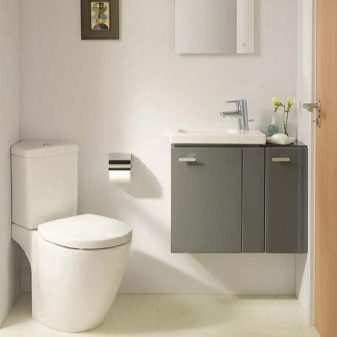
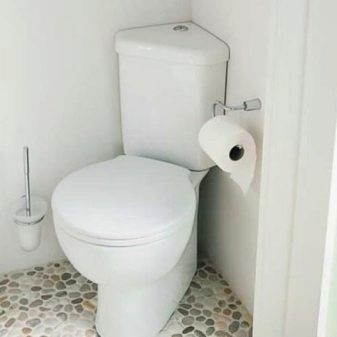
Classifications
Despite the fact that the choice of corner toilets is narrower than conventional ones, there are a large number of classifications of such models. It is impossible to confine oneself to only indicating whether the toilet is floor-standing, wall-mounted or built-in.
Depending on the material used, the toilet can be of several types.
- Plastic. Such a product is made of acrylic, it is lightweight, easy to install and quite durable. Such plumbing amazes with a variety of colors: from classic glossy white options to extravagant black or turquoise. However, acrylic toilets are not resistant to temperature extremes and mechanical damage.
- Porcelain. It is durable and has a long service life, made from white clay with mineral additives from quartz and spar, covered with glaze.
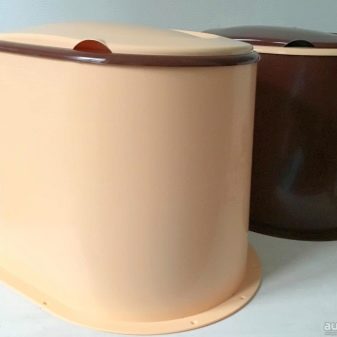
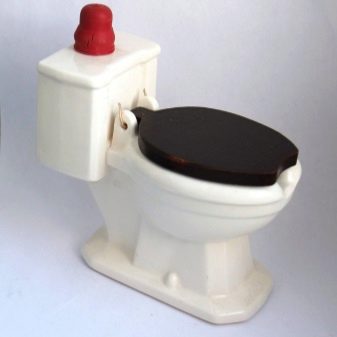
- Faience. Faience sanitary ware is fired with high temperatures before glazing, which gives it additional strength.
- Piece products from non-standard materials.For the production of sanitary ware, famous designers have used natural stone, steel and even precious metals more than once.
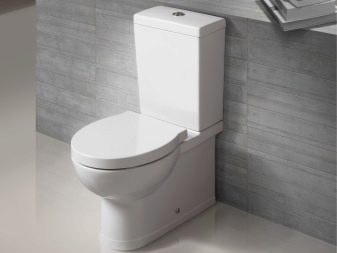
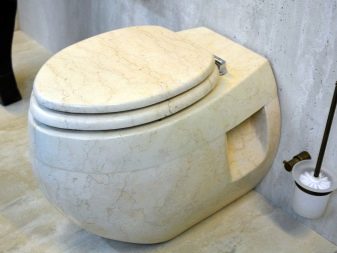
The type of bowl determines the degree of convenience when using the toilet: saving water consumption, volume, amount of splashes, and so on. Today there are only three options to choose from.
- Bowl with shelf. The disadvantages of using a bowl of this type prevail over the affordable cost and ease of manufacture, since all waste products will remain on the stage of the device. After rinsing, it will be necessary to use a brush without fail, but even it will not get rid of the unpleasant odor in the room. In a bowl of this type, a water seal is always formed, which will lead to the formation of plaque and rust. A bowl with a shelf has a higher water consumption compared to other types. A significant advantage is the absence of splashes when draining.
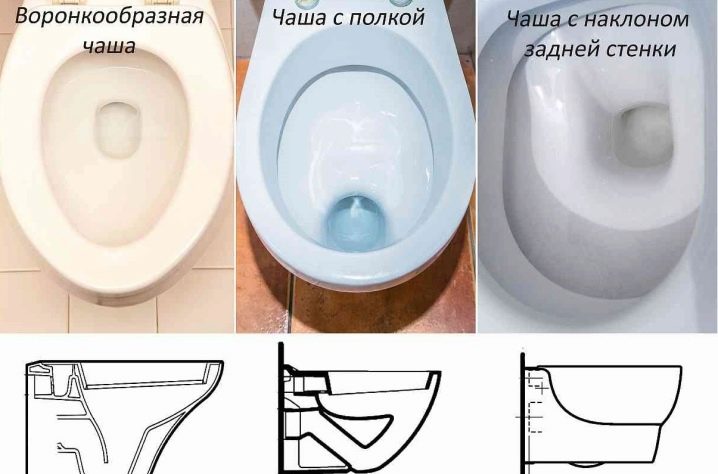
- Bowl with a sloped front or back wall. This design of the toilet allows you to minimize the penetration of unpleasant odors into the room, since the waste falls directly into the water. Despite this, the brush has to be used, as well as in the version of the bowl with a shelf.
- Funnel-shaped bowl. Such a monoblock is the most hygienic and saves water, which does not require as much as in the first two options. An unpleasant smell almost never occurs, it is necessary to use a brush quite rarely, however, such a bowl design is inconvenient due to the creation of a large amount of splashes that fall on the body, clothes and the surrounding space. To reduce splashing water, the Anti-Splash device was invented, which regulates the water level and eliminates the described problem.
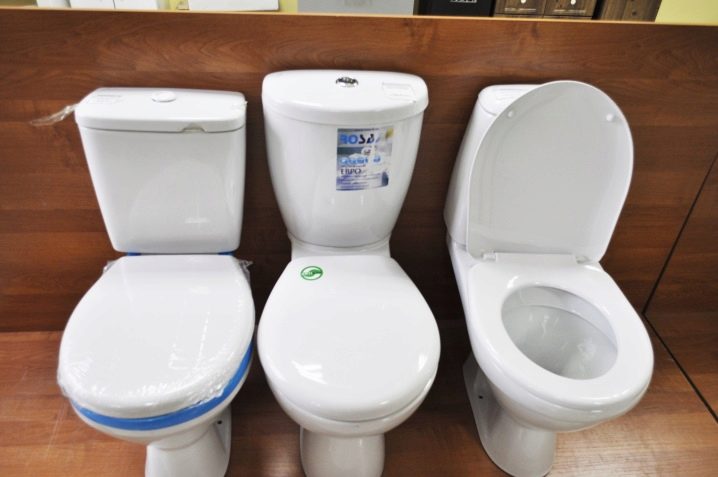
The sewer outlet does not affect the usability and does not visually change the plumbing, but it can significantly affect the choice of the model.
There are three types of drainage systems.
- With horizontal outlet. This option is used when the height of the sewer pipe is 5–10 cm above the floor.
- With vertical release. The most suitable type for the sewer, the entrance to which is located on the floor. Although this option achieves the greatest space savings and a compact arrangement of plumbing, this option is quite rare in multi-storey buildings.
- With oblique release. The most common option, assuming the location is low from the floor. It is angled at an angle.
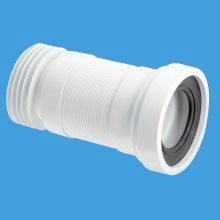
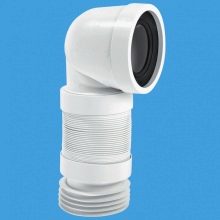

It is not possible to replace plumbing fixtures with one branch with another without completely replacing the sewer pipes, so you need to know what exactly to buy in a plumbing store.
The minimum size of the cistern is that it must hold at least 6 liters of water. Depending on the design, the drain tank can be rectangular, pyramidal, or conical. However, for corner toilets, the triangular type is most often used to place it flush against the walls. By the type of water supply to it, one can distinguish a tank with a water supply from the bottom, side and rear. When located below and behind the tank, the supply is not visible at first glance. It looks neater on closer inspection, but the side feed is simpler and more economical.
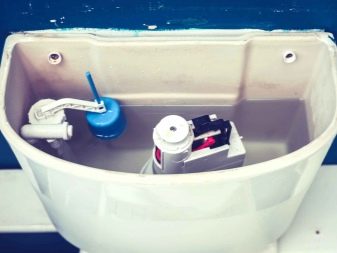
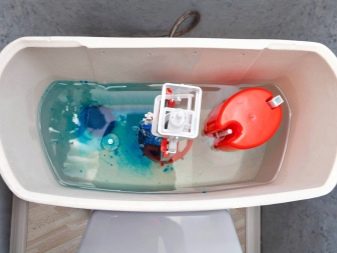
You can also divide the toilet bowls according to the mechanism and mode of flushing.
According to the mechanism of draining the tanks, the toilet bowls are divided into the following types:
- a toilet with a drain lever located on the side of the tank;
- drain with a mechanical button, which is located in the cover of the drain tank;
- a mechanical stem located on top of the barrel triggers the drain when lifting;
- toilet with an electronic button;
- with remote control;
- draining with a touch sensor.
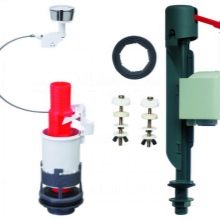
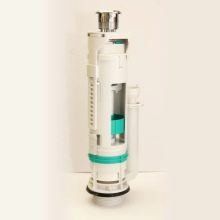
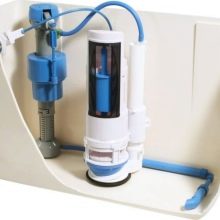
The drain itself may differ in mode.
Depending on this criterion, the following types are distinguished:
- when you press the lever or button, one flush is performed, after which the toilet tank is filled from a small tap located inside;
- the drain can be started or stopped by pressing the button manually;
- There can be several buttons, each of them is responsible for draining a certain amount of water (8, 6 or 3 liters).
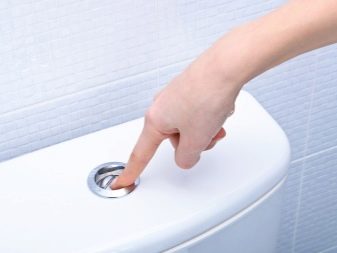
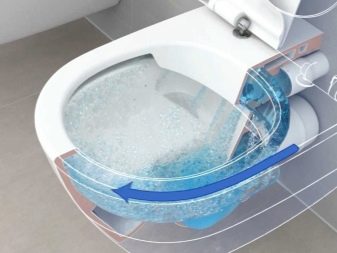
The last classification of plumbing is the classification by design.
- Toilet bowl compact. The drain tank and the compact bowl are sold separately, and during installation, first of all, the tank is installed on the bowl, and then the bowl is fastened with brackets to the floor. In addition to the low cost and ease of transportation, the advantage is the ability to replace only one part of the toilet if it breaks down.
- Monoblock. The bowl and tank of such a product are inseparable from each other. The big advantage of this option is its small size and the absence of additional operations before installation. The downside is the need to completely change the product in the event of a breakdown of one of its parts, even if the other is functioning properly.
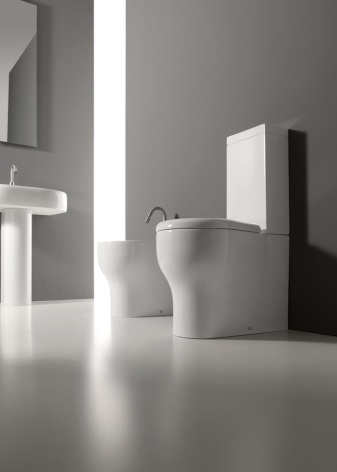
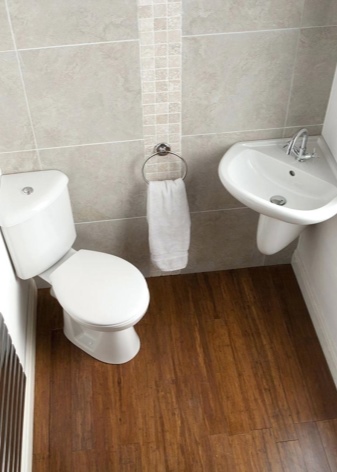
Advantages and disadvantages
Since the corner toilet differs from the usual one, often only in the shape of the cistern, the choice of this option will in no way reduce the level of comfort. Some manufacturers offer corner toilets already complete not only with a cistern, but also with everything necessary for its installation.
There are several advantages of this design, compared to conventional models:
- the corner toilet allows you to minimize the "dead zone", which is located behind the classic floor-standing compact toilet;
- the tank itself of this design takes up less space;
- in the space saved by the corner system, you can install a small sink, bidet or fit a modest washing machine even in a tiny room of apartment high-rise buildings without serious redevelopment.
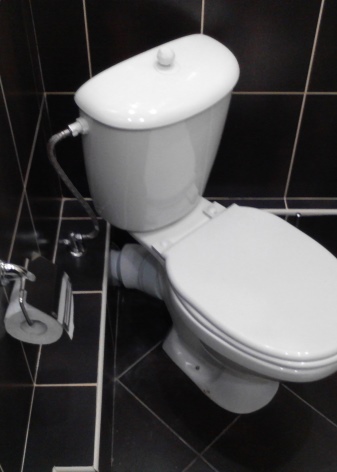
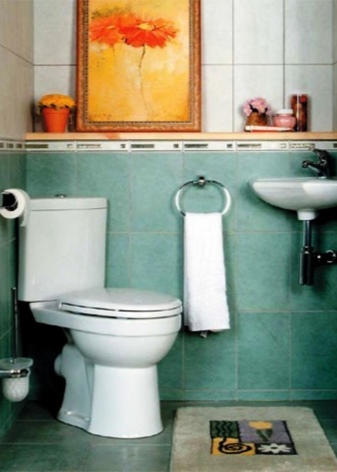
Despite all the advantages of corner plumbing, there are two significant disadvantages.
- A rather large weight of hinged-type structures, which completely excludes their installation on a plasterboard wall or partition.
- The complexity of installation, especially if it is necessary to transfer the sewer bell from the middle of the wall to one of the corners of the room.
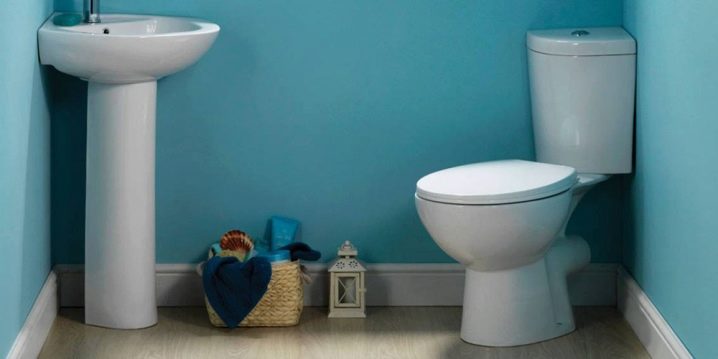
In some cases, the bathroom is so tiny that even using a corner toilet will not help "carve out" additional space in it, and may even lead to the fact that a person sitting in such a toilet will rest their feet against the wall.
Models
There are many manufacturers of plumbing fixtures that have proven themselves in the domestic and global market. Of the manufacturers of floor-standing toilets, a Turkish manufacturer can be distinguished Vitra with its corner toilet-compact Vitra Arkitekt... The cost of such a device fluctuates around 6000-7000 rubles. Made of porcelain, the toilet has a bottom water supply and two drainage modes. A toilet is located in approximately the same price range (8000-9000 rubles) Sanart constructor with single pump drain and microlift seat.
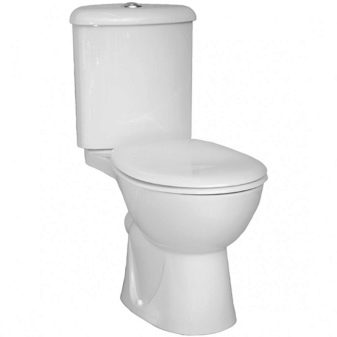
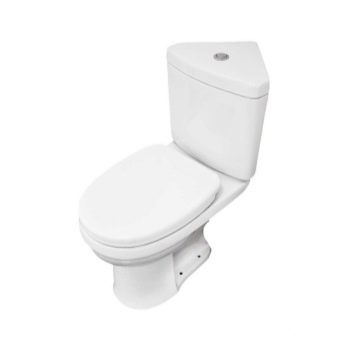
You can note the product of the Belgian production Ideal Standard Connect ARC E803601... The water supply to this porcelain toilet is carried out from below, there is no microlift, but installation is possible. This product costs about 18,500 rubles. Also from the floor plumbing, you can distinguish the French corner toilet. Jacob Delafon Odeon Up 18557К, the price of which is already from 21,000 rubles and above. It is equipped with a bottom water inlet, double drain button (3/6 l), system "Anti-splash"... Installing a microlift at the request of the client makes this toilet the most comfortable and useful purchase.
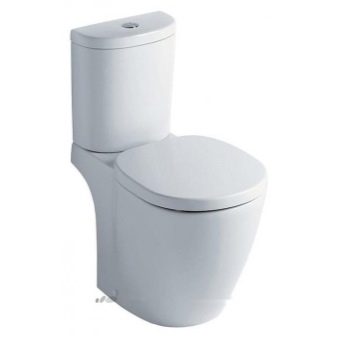
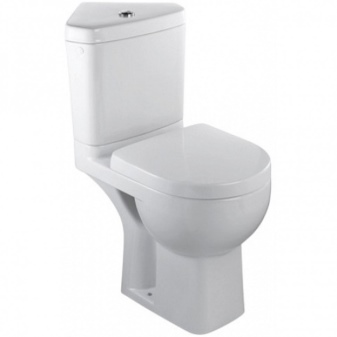
Attachable toilets are a kind of compromise between floor-standing and hanging systems. Their cistern, like that of a hanging product, is hidden in the wall, and the bowl rests on the floor, like a floor-standing toilet. Attached Hatria you & me from the Italian manufacturer can be made in two versions: with an attached barrel (about 25,000 rubles) or an additional installation (plus another 9,000 rubles).
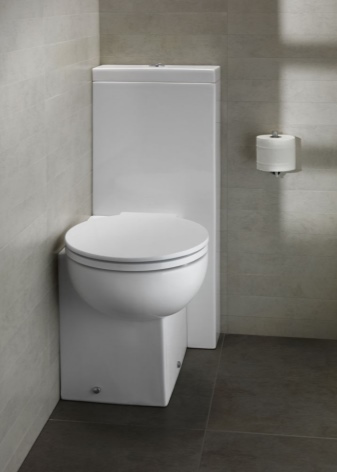

On the plumbing market today there is a wide selection of not only models, but also countries of manufacture of such plumbing. Belgian manufacturer Ideal Standardthe acclaimed Spanish toilets Roca, plumbing brand Cersanit from Poland. German quality and reliability represented by toilets Serel Friendly 6706 made in Germany. English brand Marlin kyle not so widely known, but its models are also available in large hardware stores and for ordering via the Internet. French porcelain and earthenware manufacturers such as Odeon Up or »Creo Project.
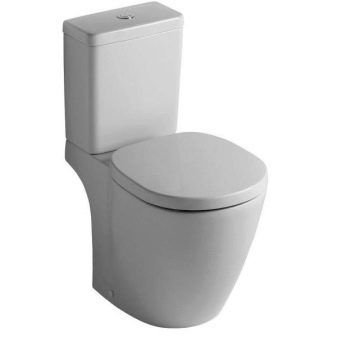

Domestic producers are represented on the market by three large companies: Santek, Keramin and Sanita. The first and second firms produce mainly budget options, while the last company is famous for a variety of prices and modifications of finished products.
Advice
The installation of a corner toilet itself differs from the usual installation in that it requires a preliminary connection of the sewage system. Most often, the riser is located parallel to the wall, which makes it difficult to install corner plumbing. And the master is faced with the task: how to connect the drain hole of the toilet, located in the corner with a bell, which is located near the middle of the wall. For the solution, a corrugated pipe is perfect, which stretches and bends at the required angle. However, the shorter the length of such a connecting pipe, the less the likelihood of blockages.

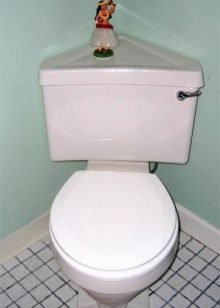
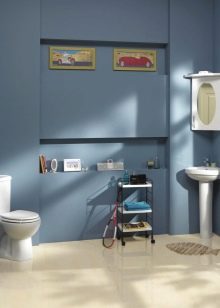
To connect the corner toilet to the water supply and drainage systems, you will need the following tools:
- puncher;
- corrugated pipe for branch;
- hose through which water will be supplied;
- sealant;
- fasteners and tools for it.
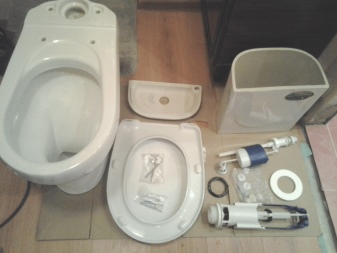
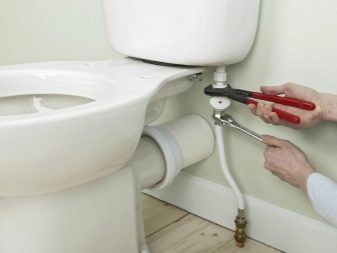
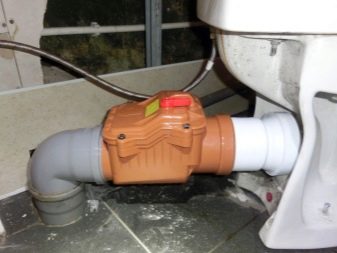
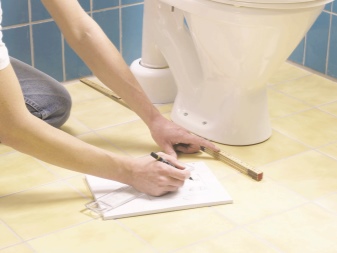
Installation consists of several stages.
- As accurately as possible, the drain hole in the toilet bowl and the sewer socket is combined with the help of a corrugation.
- The points of attachment of the toilet bowl to the floor or podium are outlined, and holes are drilled using a puncher. Fix the structure with bolts.
- Install the drain tank aligning the drain holes. At this stage, it is important not to move the silicone gasket, which prevents the joint from leaking.
- The water supply is connected using a flexible hose.
- All joints are treated with sealant in order to eliminate the risk of leakage.
- After the sealant has dried, you can check the tightness of the assembled structure. To do this, you need to turn on the water and check all the joints of the parts for leaks.

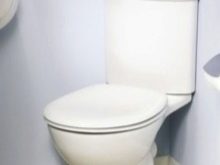
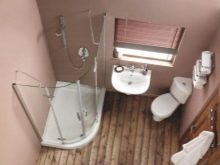
Best options
The corner toilet fits well into any interior. For a minimalist design, a single-color product with clear shapes and small sizes is perfect. To create an atmosphere of relaxation and comfort, plumbing can be selected in warm light shades of peach or herbal color. For a classic interior, a corner model with a decor slightly hinting at the columns of antique temples or medieval castles is perfect. Smooth but clear lines, noble white color give this toilet solidity, and installation at a short distance from the wall will allow you to hide various items for daily care behind it.
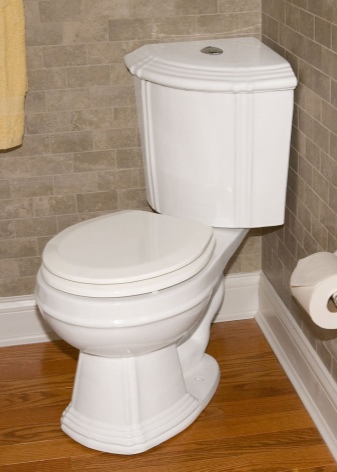
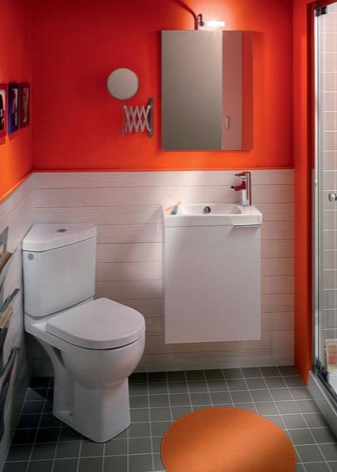
Modern bathroom design calls for an unusual toilet. The original wall-mounted toilet bowl with installation, located in the corner, but turned parallel to the wall, which "breaks" the idea of standard ways of placing furniture. The white color of the sanitary ware is presented in contrast with the glossy black surface of the tiles, which allows you to place bright accents in all functional areas of the room.
A good option for placing a corner toilet in the cramped conditions of an average bathroom allows you to additionally place a washing machine in it. Interior items do not block each other, there is a free passage to any zone and everything is “at hand”.


The costs of purchasing and installing a high-quality corner structure allow you to completely change the space of the washroom and bathroom.Thanks to such a toilet, space is freed up in the central part of a small room, which is of paramount importance. Many buyers like that plumbing fixtures don't look boring or cramped. They often leave positive reviews, as the functionality of the room increases, while the comfort remains unchanged.
For information on how to choose a corner toilet, see the next video.













The comment was sent successfully.